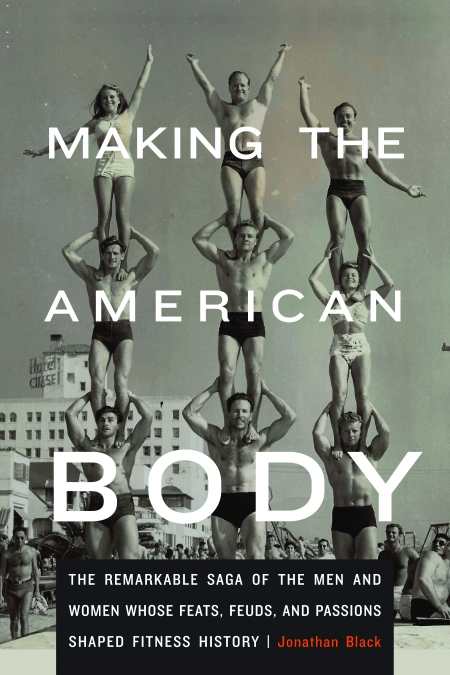Making the American Body
The Remarkable Saga of the Men and Women Whose Feats, Feuds, and Passions Shaped Fitness History
This informative account delves into the personalities who brought the fitness trend to America.
In Making the American Body, Jonathan Black masterfully explores the many twists and evolutions of the fitness industry, from barbells to exercise machines to today’s health clubs. Black reveals the huge egos, intense rivalries, and the rise and fall of trends that have defined Americans’ quest for healthier physiques.
Opening with an historical overview, Black notes the Greek admiration of the perfect body and the spread of the fitness movement into Europe. One of the earliest American sensations was Eugen Sandow, who visited the United States in 1893. His good looks and impressive physique became legendary, and women were known to faint after simply touching his muscles. The early 1900s saw a proliferation of magazines and books on bodybuilding and fitness, as well as the appearance of men like Charles Atlas, barbell manufacturer and weightlifter Bob Hoffman, and Joe Weider. Outrageous health claims and accusations and feuds among competing stables of strongmen were common as self-promotion, pride, and shifting alliances fueled the various physical competitions and public posturing.
Black continues by breaking down his chapters into time periods of two or three decades each, allowing him to focus on the highlights of each era. He transitions from the early emphasis of dead-weight lifting and building up physical bulk to Muscle Beach, California, during the 1930s to 1950s, where the focus shifted more to gymnastic-type fitness and an overall proportioned physique. The emergence of women also began in this period, and Abbye “Pudgy” Stocton became a pivotal figure in the developing women’s exercise and fitness movement.
The 60s and 70s saw the use of machines become more prevalent. The Nautilus and Lifecycle started appearing in many “fitness centers,” which were transforming the training in dingy gyms into clean, inviting facilities offering multiple forms of exercise. The fitness centers would also begin offering classes based on movements such as Pilates and aerobics.
Soon after, Jane Fonda and Judi Sheppard Missett (Jazzercise) developed videos and classes aimed at women, and Richard Simmons had people Sweatin’ to the Oldies. Black discusses the impact of Arnold Schwarzenegger, the reemergence of muscle building, and the details behind today’s new hot topics (Zumba, yoga). He also explains the important innovations that the fitness movement has helped birth, such as infomercials, DVD sales, and new social centers.
Black provides an informative yet highly readable account of the health, strength, and nutrition industry. His chapters are filled with names of people and companies that most Americans are likely familiar with—Jake Seinfeld, Bally, Reebok, Gold’s Gym, Jim Fixx, Jack LaLanne—but do not know the interesting stories behind them. Making the American Body is not just for fitness and health devotees, but it’s a very enjoyable book for anyone wanting to get a glimpse into the origins and workings of an industry that has “shaped” America—physically, socially, and culturally.
Reviewed by
Jeff Friend
Disclosure: This article is not an endorsement, but a review. The publisher of this book provided free copies of the book to have their book reviewed by a professional reviewer. No fee was paid by the publisher for this review. Foreword Reviews only recommends books that we love. Foreword Magazine, Inc. is disclosing this in accordance with the Federal Trade Commission’s 16 CFR, Part 255.

